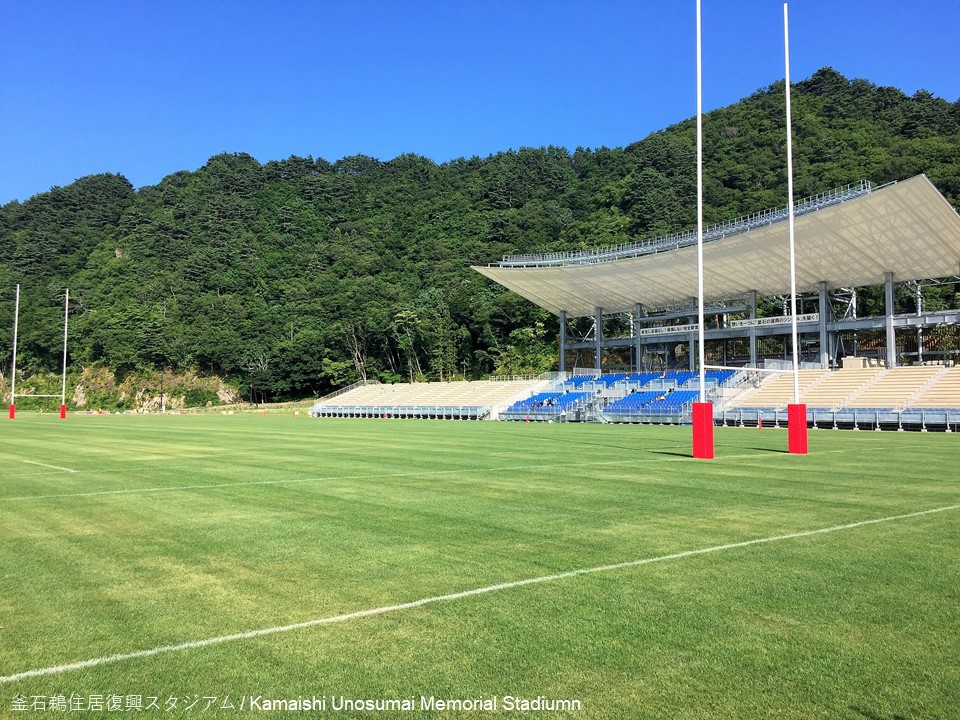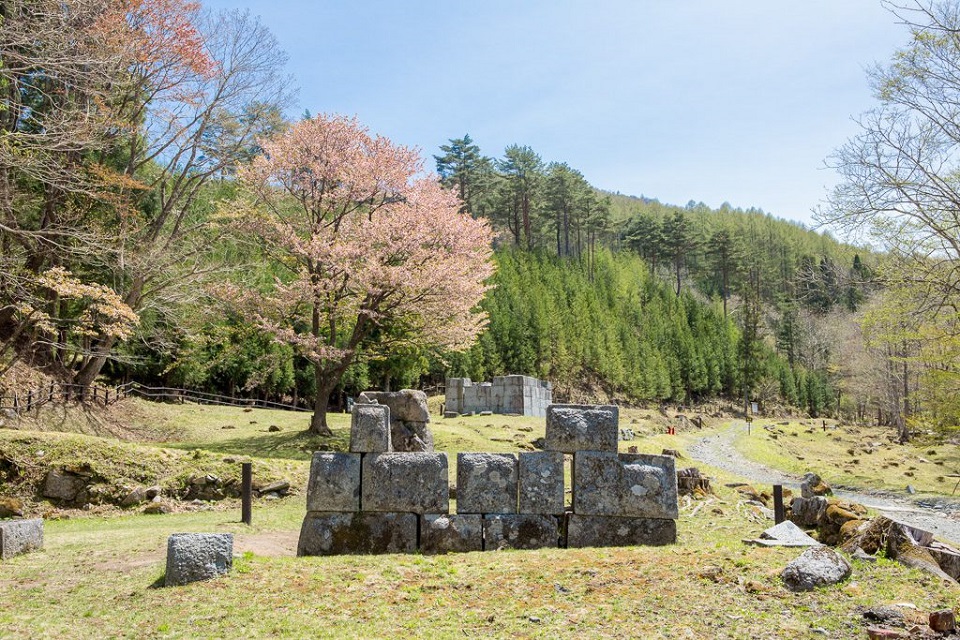PEOPLE
Kamaishi's "Miracles" and Overcoming Disaster: The Huge Opportunity Provided by World Heritage Site Inscription
Proprietor, Houraikan Inn
1989 Became proprietor of Houraikan Inn
2008 Won the grand prize at the Mainichi Newspapers’ Green Tourism Awards 2008
April 2015 Reopened Houraikan Inn following refurbishment
People Keep on Persevering
During the first Rugby World Cup ever held in Asia, the performance of the Japanese team generated tremendous excitement. In Kamaishi, morale was boosted after the city was chosen as one of the 12 venues, and everyone was going around saying, “Let’s hope the rugby attracts plenty of attention.” But I don’t think anybody imagined it would create the huge sensation it actually did.
On September 25, 2019, the match between Fiji and Uruguay was held at the Kamaishi Unosumai Memorial Stadium, which had been newly built on the site of the former local elementary and junior high schools destroyed in the tsunami. This small city of Kamaishi hosted around 16,000 people: the viewing stands were brimming with smiling faces and cheers, and an incredible feeling of exhilaration enveloped us. Yet, in the aftermath of the earthquake and tsunami we thought we would never see another happy day. We had lost even the strength to dream. But I couldn’t help being impressed at how people just keep on persevering after they’re knocked back.
Kamaishi’s Two “Miracles” Started 2015
Kamaishi’s miracles had started in 2015. In March, Kamaishi was selected as a Rugby World Cup venue, and in July the Sites of Japan’s Meiji Industrial Revolution were inscribed as a World Heritage site. Inside the special event space at the Kamaishi Unosumai Memorial Stadium, a display was set up featuring the Hashino Iron Mining and Smelting Site as one of the newly inscribed World Heritage sites. For us, these two developments—Kamaishi’s selection as a Rugby World Cup venue and the Hashino site’s selection as one of the Sites of Japan’s Meiji Industrial Revolution—were linked. What they had in common was hope. And Koko Kato was the person who brought us that hope.
The way I see it now is that, just when we were looking up at the heavens praying for something to hope for, Koko was “above” Japan scanning the country, searching for somewhere that might make a good industrial revolution site. Then her eyes fell on the Hashino Iron Mining and Smelting Site, and said “Yes, I’ve found one!” Well, that’s the way I picture it, anyway [laughs].
I first met Koko in 2007, about three years before Kamaishi’s Hashino site was added to the group of sites comprising Japan’s serial nomination for World Heritage registration. At that time Koko said that the Hashino site had merit as an industrial heritage location. She pointed out that its merit was not in the arrangement of its stones, but in the people who had preserved the site over time. Her words gave us the confidence to take action and aim for World Heritage registration.
But then, in March 2011, we were hit by the Tohoku earthquake and tsunami. In the immediate aftermath we were visited by people with rugby connections; I suppose they were trying to do what they could to boost our morale. They often tried to cheer us up by reminding us that the Rugby World Cup was coming to Japan in 2019. So I said, “In that case, I’d like to see it held in Kamaishi,” and that was what prompted us to start lobbying for selection. Of course, it was thanks to the efforts of a great many people that my wish eventually came true, but I believe that if I hadn’t met Koko, I would have just continued to feel defeated and would never have had the optimistic idea that Kamaishi could become a Rugby World Cup venue.
Iron Was an Integral Part of Life for the People of Kamaishi
Kamaishi is said to be inextricably linked to rugby, and that link had its beginnings in ironmaking. If it weren’t for the Hashino Iron Mining and Smelting Site, Nippon Steel Corporation would never have existed in Kamaishi, and in that case the Nippon Steel Kamaishi Rugby Club would never have played rugby.
Kamaishi’s population is currently around 33,000. In the days when companies associated with the critical industry of ironmaking were concentrated in Kamaishi, almost 100,000 people lived here. People whose families had lived in Kamaishi for a long time were involved in fishing and farming, but most of them combined those jobs with work in the ironmaking industry. Either that, or somebody in their family would be involved in business related to the ironworks. So, iron was an integral part of life for the people of Kamaishi. And our family’s no exception: the Houraikan Inn started by my parents in 1963 served mainly as an employee holiday home for the ironworks because its holiday homes had become dilapidated. As Nebama Beach was the only resort in the area, never-ending crowds of visitors came, and on summer nights the resort never slept. I’ll never forget how bright and colorful it looked when I was a child.


Representative Director, National Congress of Industrial Heritage
(Honorary Advisor, Kyushu Railway Company (JR Kyushu)
Senior Researcher, Industrial Heritage Information Centre
Honorary Advisor, Nippon Mining Co., Ltd.
The Ambassador of Supporting Kamaishi Hometown
Former Director of Nagasaki City World Heritage Office
Former General Manager, Nagasaki Shipyard and Machinery Works, Mitsubishi Heavy Industries, Ltd.
Chairman, Fujisankei Group
Executive Managing Advisor, Fuji Television Network, Inc.
Executive Managing Advisor, Fuji Media Holdings, Inc.
Advisor, Federation of Japan Port and Airport Construction Association
(Ex. Chairman of Specialists Center of Port and Airport Engineering)
Mayor of Nagasaki City
Former Director of the Sano Tsunetami Memorial Museum (currently known as Sano Tsunetami and the Mietsu Naval Dock History Museum)
Director of NPO Association for Thinking about Satoyama
Director of National Congress of the Industrial Heritage
Honorary Chief Priest Toshinari Ueda
Former Mayor of Omuta City
Archaeologist and Heritage Conservation Specialist
A fellow of the Japan Federation of Engineering Societies
Team Member of the Industrial Project Team Office for the Promotion of World Heritage Listing under Cabinet Secretariat
Governor of Kagoshima Prefecture
Mayor of Hagi City
Mayor of Uki City, Kumamoto Prefecture
The Former Employee of Nippon Steel Corporation
An Associate Professor of the Faculty of Science and Engineering in Iwate University
Chairman of the Tourist Guide Association of Misumi West Port
President of Kuraya Narusawa Co., Ltd.
Chairman of Izunokuni City Tourism Association
Director and General Manager of Gunkanjima Concierge
Producer of the Gunkanjima Digital Museum
Owner at Tōge Chaya
Chairman: Mr. Hidenori Date
President: Mr. Masahiro Date
Proprietor, Houraikan Inn
Representative Director of Egawa Bunko non-profit incorporated foundation
The 42nd head of the Egawa Family
Democratic Party for the People (DPP) Representative for Nagasaki Prefecture
President of the NPO, Way to World Heritage Gunkanjima
Representative Director
MI Consulting Group
President of Watanabe Production Group and Honorary Chair of Watanabe Productions Co., Ltd.
Member of the House of Councillors
Governor
Kagoshima Prefecture
World Heritage Consultant
Director and Dean, The Kyushu-Asia Institute of Leadership
Representative Director, SUMIDA, Inc.
Journalist, founder of the Shimomura Mitsuko Ikikata Juku School
Representative, Rally Nippon
Chairman, Sites of Japan’s Meiji Industrial Revolution World Heritage Route Promotion Council Director, National Congress of Industrial Heritage
Representative Director, General Incorporated Foundation National Congress of Industrial Heritage (Advisor, Public Interest Incorporated Foundation Capital Markets Research Institute)
Mayor of Nagasaki City
Policy Director at Heritage Montreal
World Heritage Consultant
Executive Director of Kogakuin University
Heritage Architect and International Consultant
Head of Data Acquisition at The Glasgow School of Art’s School of Simulation and Visualisation
Head of Industrial Heritage, Historic Environment Scotland, Edinburgh
Scottish Ten Project Manager, Historic Environment Scotland, Edinburgh
Mayor of Izunokuni City, Shizuoka Prefecture
Pro-Provost and Chairman of Council of the Royal College of Art. Heritage advisor of Canal & River Trust for England and Wales.
Dean of Tokyo Rissho Junior College
Professor emeritus of Keio University
Mayor of Kitakyushu City
At the 39th session of the World Heritage Committee convened in Bonn, Germany, from June 28 to July 8, 2015, the decision was approved to inscribe the Sites of Japan’s Meiji Industrial Revolution on the World Heritage list.
At a celebratory party held to mark the occasion, some of the primary promoters of the project spoke of their joy in achieving their goal and of the trials and tribulations to getting there.
Director and Managing Executive Officer, Hanshin Expressway Company Limited
Member, Board of Directors, National Congress of Industrial Heritage
Vice-Governor of Shizuoka Prefecture
Mayor of Hagi City
Chairman, Tokyo Metro Co., Ltd.
Mayor of Omuta City
Deputy Director-General, Lifelong Learning Policy Bureau, MEXT
Former Counsellor, Cabinet Secretariat
Mayor of Kamaishi City
Member, Board of Directors, National Congress of Industrial Heritage Counselor, Shimadzu Limited
Chairman of the Consortium for the World Heritage Inscription of Modern Industrial Heritage (Kyushu-Yamaguchi) and governor of Kagoshima Prefecture (as of 2015)